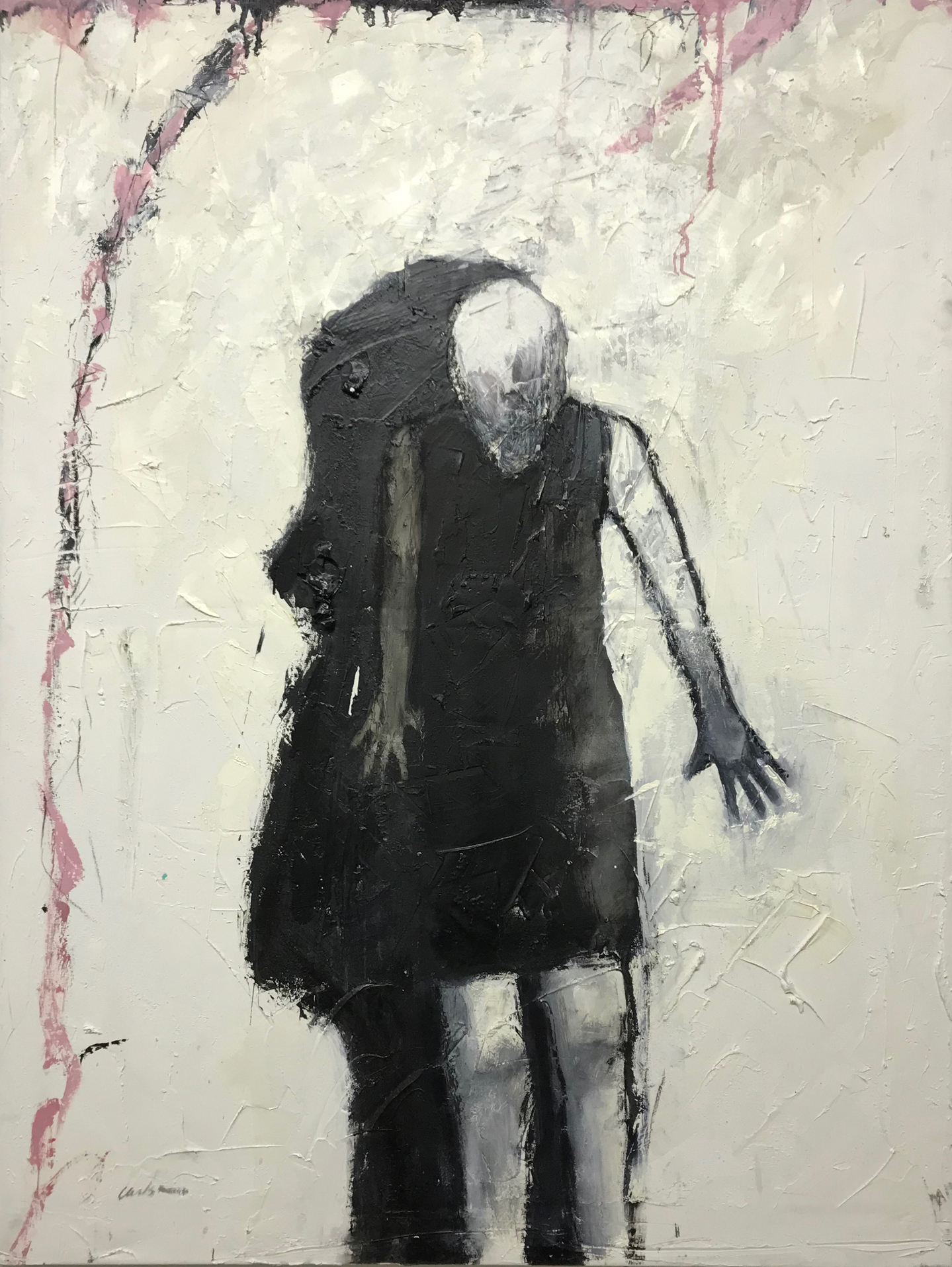Don’t Be Still
HEDGE Gallery, Cleveland OH, March - May 2018
An introduction by Karen Sandstrom
In discussions about bias and abuses that plague women, female voices often dominate. On one hand, maybe they should. On the other hand, say artists Robert Banks and John Carlson, gender inequities affect everyone. What might unfold when men join the dialogue?
Don’t Be Still invites us to find out. This exhibition is the culmination of a long friendship and a two-year artistic collaboration in which filmmaker Banks and visual artist Carlson submerged themselves in consideration of what it means to be female and threatened: with prejudice, with harassment, with violence, and with economic imbalance.
The work also poses intriguing questions about the male role in making things better.
Carlson’s paintings often use pared-down forms and palettes, along with bold gesture, to convey fragments of narrative. Banks applies the tools of conceptualism and experimentation to his films. For this project, each returns to the idea of a female figure, her head shrouded, her body caught in motions suggesting struggle.
The two have staked out important territory by making work around some of the most hot-button issues of the day. Even as they filmed and painted, the landscape was changing all around them.
“I liken it to an oil spill, because as we worked, it kept expanding and spreading into different areas,” Carlson says. Donald Trump was a presidential candidate when the project began; the release of a recording of him uttering boorish comments about women, made during filming of an “Access Hollywood” segment, threw light on “lock room talk” and voters’ apparent tolerance for it.
Then came revelations about movie mogul Harvey Weinstein’s lifetime of sexual abuse, and the resulting avalanche of sexual harassment stories often accompanied by the #metoo hashtag on social media. Added to that was the artists’ understanding of the degree to which women are under-represented in major museums, and as power brokers in the art world.
“We both have strong feminist beliefs and stand by them all the way,” says Banks. “The MEE-TOO, I'd say, is a little late in the game. But all the same, our message was from another perspective, as well as hints of the common awareness of sexual harassment.”
For Carlson and Banks, the question was never whether they should comment on these topics; working out how to do it well became part of the creative evolution.
“We had an agreement that nothing portrayed was to be gratuitous or overt,” Carlson says. “Everything was to be implied, which we feel gives the viewer much more room to investigate and expand the narrative, and demanded that much more of our skills as artists.”
To the degree that Don’t Be Still reflects male perspectives, the artists agree that it might make space for others to engage the issues.
“I believe most men, when you challenge them on the topic of gender equality, will react more openly about the topic, and at the same time will still argue about the male responsibility at the home and in the workplace,” Banks says. “The things that make us different are meant to bring us together, as nature has intended. This day and age has required a new definition of what it means to ‘man-up.’ It needs to be reviewed and discussed openly.”
Carlson agrees. “We hope men will look at this as an opportunity to use the qualities of what we think make us men to look go deeper — our strength and bravery,” he says. “Let us be brave enough to be sensitive, and strong enough to be vulnerable. To me, these are human traits.”








